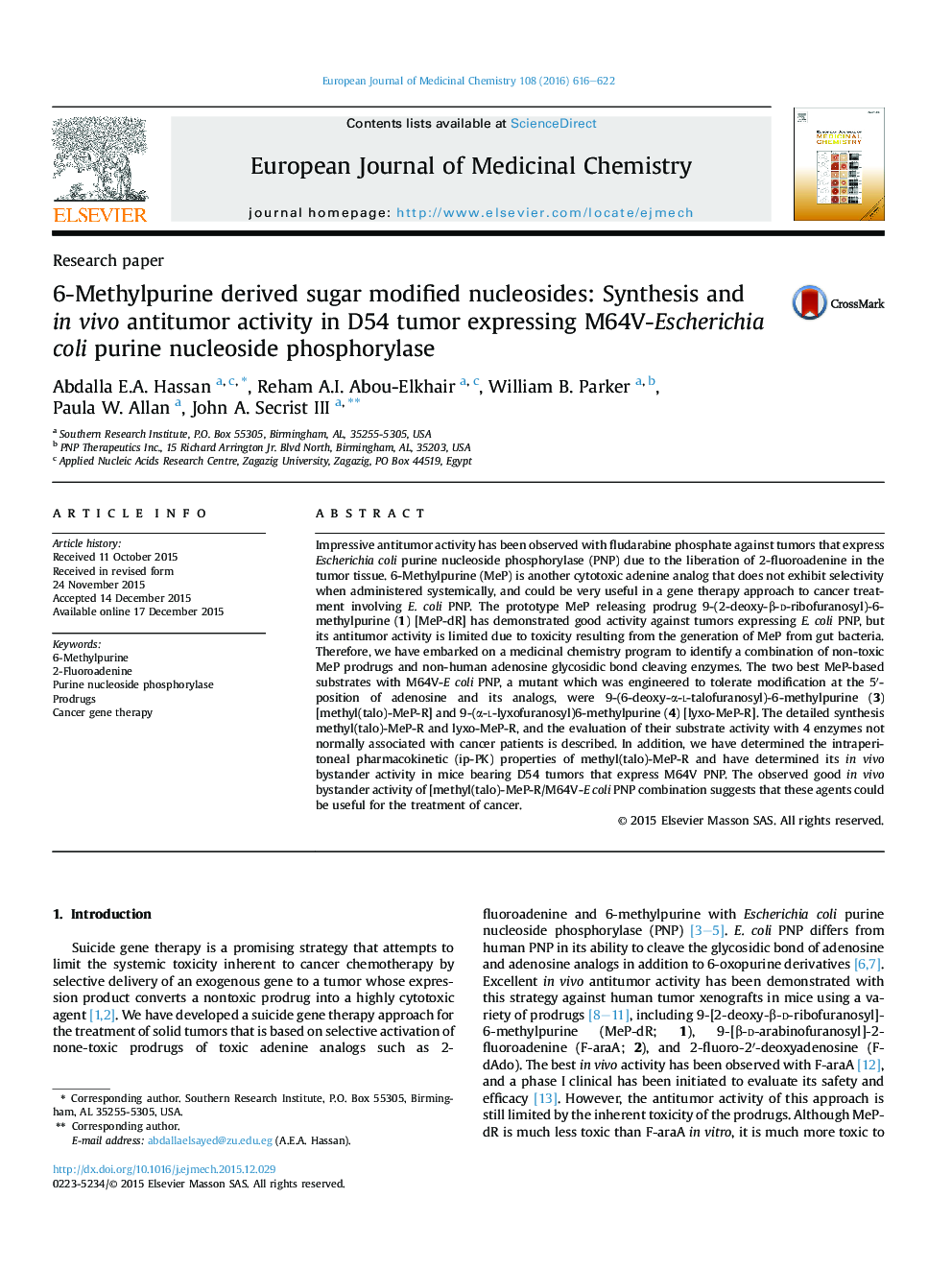| Article ID | Journal | Published Year | Pages | File Type |
|---|---|---|---|---|
| 1393878 | European Journal of Medicinal Chemistry | 2016 | 7 Pages |
•Methyl(talo)-MeP-R; 3 and lyxo-MeP-R; 4 were synthesized and evaluated as potential prodrugs.•The substrate activity 3 and 4 were evaluated with several phosphorylase enzymes.•In conjunction with M64V-E. coli PNPm, 3 showed good in vivo bystander activity.
Impressive antitumor activity has been observed with fludarabine phosphate against tumors that express Escherichia coli purine nucleoside phosphorylase (PNP) due to the liberation of 2-fluoroadenine in the tumor tissue. 6-Methylpurine (MeP) is another cytotoxic adenine analog that does not exhibit selectivity when administered systemically, and could be very useful in a gene therapy approach to cancer treatment involving E. coli PNP. The prototype MeP releasing prodrug 9-(2-deoxy-β-d-ribofuranosyl)-6-methylpurine (1) [MeP-dR] has demonstrated good activity against tumors expressing E. coli PNP, but its antitumor activity is limited due to toxicity resulting from the generation of MeP from gut bacteria. Therefore, we have embarked on a medicinal chemistry program to identify a combination of non-toxic MeP prodrugs and non-human adenosine glycosidic bond cleaving enzymes. The two best MeP-based substrates with M64V-E coli PNP, a mutant which was engineered to tolerate modification at the 5′-position of adenosine and its analogs, were 9-(6-deoxy-α-l-talofuranosyl)-6-methylpurine (3) [methyl(talo)-MeP-R] and 9-(α-l-lyxofuranosyl)6-methylpurine (4) [lyxo-MeP-R]. The detailed synthesis methyl(talo)-MeP-R and lyxo-MeP-R, and the evaluation of their substrate activity with 4 enzymes not normally associated with cancer patients is described. In addition, we have determined the intraperitoneal pharmacokinetic (ip-PK) properties of methyl(talo)-MeP-R and have determined its in vivo bystander activity in mice bearing D54 tumors that express M64V PNP. The observed good in vivo bystander activity of [methyl(talo)-MeP-R/M64V-E coli PNP combination suggests that these agents could be useful for the treatment of cancer.
Graphical abstractFigure optionsDownload full-size imageDownload as PowerPoint slide
